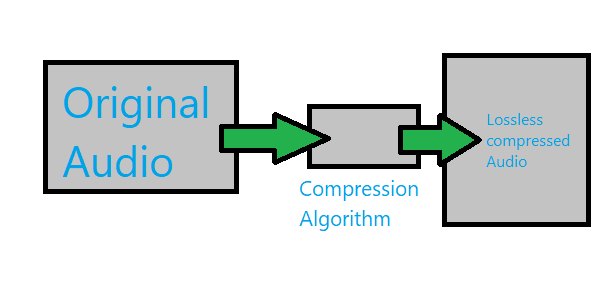Data Compression is one of the most important components of this world, driven by petabytes of data daily. We, as humans, are generating data every second. From walking to running, eating to drinking, our devices are monitoring our data, generating tons of data, and storing it in the cloud. However, sometimes, there is a need to compress the data. Compression leads to faster data transmission and less storage occupancy. There are two types of compression – Lossy compression and Lossless compression.

What is Lossless Audio compression?
Lossless compression compresses the file in such a way that the original qualities of the file are not lost at all. This compression technique borrows qualities from the ZIP algorithm, where the redundant data is removed from the file, and the integrity of the important bits of data is kept intact.
Lossless compression processes audio files in a way that the size is reduced by the quality is still intact. Lossy compression reduces the size of an original audio file up to ten times, but some audio data is lost in the process.
A normal human ear and brain cannot differentiate between the original audio quality and the one compressed with lossless audio compression. Hence, it becomes a reliable source of compressing a file rather than other methods where the quality of the file is compromised.
Audio compression is very critical in the music industry. This helps in efficient audio streaming and production. Some of the most popular lossless audio compression formats are:
- FLAC
- WAV
- ALAC
- WMA Lossless.
If you download an audio file compressed in a lossless format, you will still have the audio in almost the original quality of a source.
It is worth noting that MP3 is not a lossless audio format.
TIP: Monkeys Audio is a free lossless compression software for your music files.
Is there anything you’d like to add to this article?
Leave a Reply